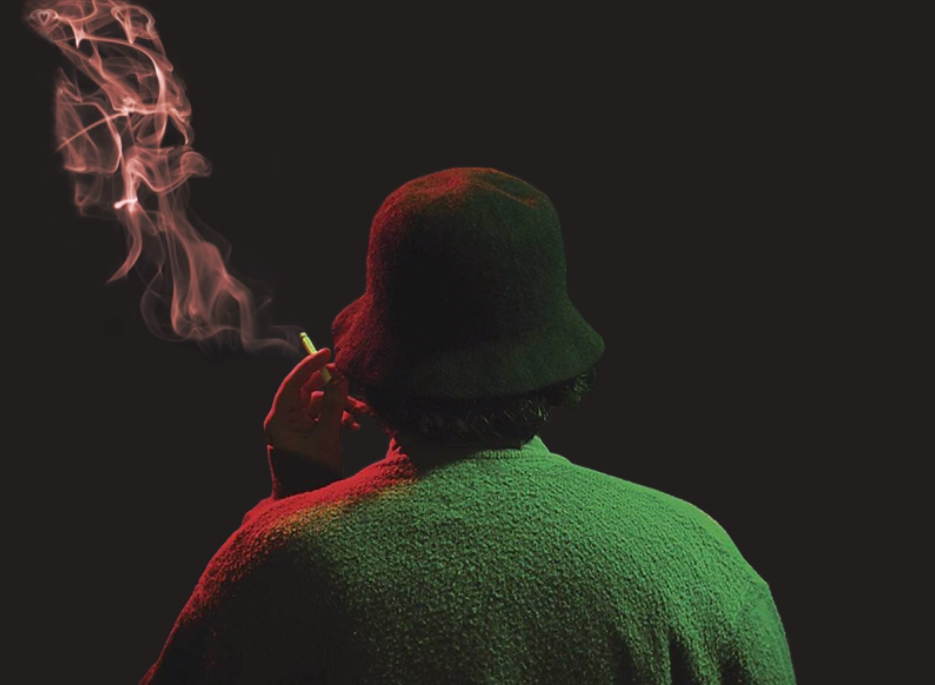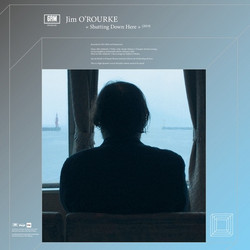Jim O'Rourke - Shutting Down Here
Time has a way of slipping. It’s been almost two decades since Jim O’Rourke drifted into a shadowy, intermittent silence, following his move to Japan in 2001; a mic drop - maybe a fuck all y’all - by one of the most singular voices in contemporary sound. And yet, while O’Rourke’s movements in the world have slowed, the pace of his productivity has not. He remains, as ever, an artist who defies justice with words. Awe inspiring. Just ever so slightly out of reach. Since the mid 1980s, and across more than a hundred albums, he has carved a relentless path, refusing conceptual stasis and the boundaries of genre and idiom, producing a body of work with such a profound impact and influence, that is so striking, forward thinking, and important - while displaying a consistently unparalleled bar of quality - that it transcends the basic notions of art; becoming a network of sound, mirroring the pathways of an endlessly curious and uninhibited mind. O’Rourke’s music is thought unfolding in real time. Unbridled creativity in pursuit of the unknown. These are the depths plumbed by his latest LP, Shutting Down Here - recorded over a 30 year period at Groupe de Recherches Musicales (GRM) in Paris and Steamroom in Japan - among his most remarkable and ambitious efforts to date.
Jim O’Rourke is a snapshot of the late-life fade of the American dream. What it is, is what it was and how it dies. First generation. Working class. Raised in the suburbs of Chicago, with brilliance and deviance that neither that city nor country could contain, and for whom, ultimately, escape - first from one and then the next - seems, with hindsight, to have been the only logical path. He is among those rare individuals about whom the double-edged terms aligned with genius fall short. Visionary. Polymath. Truth-teller. He is all of them - to the heights and his undoing - and more, continuously upending and resetting the expectations of the fields into which he has strayed; from the furthest reaches of experimentalism to the saccharine depths of pop, forcing each and everything between to cohabit the same sonorous world.
For all of its disparate, seemingly unsympathetic elements, there is a logic to the sprawling body of music that O’Rourke has left in his wake; a logic of paradox, doubling back and cancelling itself out. He is the quintessential post-modern artist; the shining light among a generation consigned to the notion that everything had already been said and done, who somehow managing to say and do things first, again and again. Rethinking the wheel into entirely new forms, leaving a toe dangling in the shark infested waters of the past. O’Rourke’s rare truth - speaking with more clarity than arguably any other of his generation - is that the experimental and avant-garde musics have no corresponding aesthetics. They are pursuits, practices, and ideologies, followed by sounds. They are means rather than an ends. Where they arrive can not be preconceived or known, and is almost not the point.
If O’Rourke hadn’t such a profound impact on what his own context has subsequently become - inadvertently contributing a substantial amount of its contemporary form and language - what came to pass might have been foreseen. He was, after all, the wunderkind who, while still in his teens, tracked down heroes like Derek Bailey and Eddie Prevost; entering the fold during an era when these forms of music were almost entirely the realms of ageing radicals, and generally devoid of youth. Then as now, his foresight and vision drew him toward realms where others thought not to go. Then as now, it is impossible to know where he will go and what he will become, nor the effect he may have.
Since his emergence in Chicago underground during the late '80s, O’Rourke has continuously traversed an astoundingly diverse range of musical materiality, folding each territory of exploration into a single musical practice, while playing the double act as devoted facilitator and collaborator; taking a direct and active hand in the reemergence of seminal historical figures like John Fahey and Tony Conrad, publicly singing the praises of the long overlooked efforts of composers like Nuno Canavarro, Roberto Cacciapaglia, and Roland Kayn, among countless others - rebalancing the structure and perception of history - producing and engineering albums for others, and collaborating with such a remarkable and vast cast of players that it might be easier to list those who have yet to work with him, rather than the other way around.
While O’Rourke’s solo efforts have always taken the center stage in the vision of his voice and contribution as an artist, the structure, with its metaphors, offered by the totality of his efforts represents the clearest paths into any of its single elements. As singular, free standing, and individual as each work is, it belongs to, and is a collaboration with, the collectives of community, history, and self. His life and practice may have become isolated and private compared to what they once were, but his work is forever an open conversation - spanning the boundaries of temporality, geography, and culture - that engages the ghosts of past, present, and future alike.
Easily among the most prolific artists working in music today - there’s a palpable sense that we’ve only heard the tip of the iceberg - since his move to Japan, O’Rourke’s output has fallen into fairly concise groupings; his collaborations with others, more process oriented efforts - both archival and contemporary - first issued in Edition Mego’s Old News series and then under his own Steamroom imprint, and ambitious, freestanding statements - belonging to an arc that traces back to albums from the first half of the 90's like Tamper, Disengage, and Terminal Pharmacy - taking years to produce and that almost inevitably send ripples through the musical landscape, the most recent of which being 2009’s The Visitor and 2015’s Simple Songs. His latest, Shutting Down Here, issued by Edition Mego’s new sub-imprint, Portraits GRM, belongs to the latter.
The output of an artist tends to be regarded progressively, each subsequent album in their catalog building on, and away from, the statements and accomplishments of the last. While linked, the process of becoming for one is bound to successive lost of the past, and thus it's rare for a single album to open a window into the full breadth of an artist's thinking or activity over the coarse of their career. Within numerous dimensions, this is what Shutting Down Here activated and allows. Like nearly all of O’Rourke’s definitive statements, while entirely progressive in it's movement, it defies the notion of shedding what was. It is a dialogical distillation. Some elements remain silent, but nothing has been left out. It is a free standing statement, belonging to conversant sequence of nesting dolls with their boundaries blurred.
While undeniably present in the materiality and structures of its sounds, perhaps more than others, this is palpably observable with Shutting Down Here because of the vast period from which its elements have been drawn, comprised of sounds recorded roughly thirty years ago when O’Rourke first visited and worked in the studios of Groupe de Recherches Musicales in Paris, and more recent return made under the cover of night, his first departure from Japan in a great many years. As such, it stands as two distinct marks on time and place, forcing a recognition of everything on either side and between.
Given its historical weight and importance - bound to totemic names like Schaeffer, Ferrari, Parmegiani, and Bayle, and having birthed some of the most endurant and important electronic and electroacoustic music ever recorded - GRM tends to lay a certain gravity over the work that transpires within, and emerges from, its studios. Unsurprisingly, across the length of Shutting Down Here, O’Rourke manages to shrug this off, standing free and uninhibited, without provoking total dislocation. It re-imagines the possibilities and boundaries of electroacoustic music in a way that is almost impossible to locate in time. Encountered with nothing to go one - as an organized sequence of sounds - it could be confused for a seminal work from the past, a resonant statement entirely of this moment, or a miraculously transported artifact of some far off future that is yet to transpire.
While captured between an unavoidable temporal and experiential beginning and end, Shutting Down Here implies that which reaches far beyond. A series of points, actions, encounters, and happenings, triggering the recognition of countless others. Addressed for its sounds alone, it is a seamless hybrid, deploying instrumentalism, field recording, electronics, synthesis, and cybernetics, that ranges from total abstraction to the seductively musical. It is an immersive journey within a vast sonorous landscape that has no objective end, but no direct or literal description could do justice to what this album is and implies. It is a beacon, standing far off in the landscape of creative music, to be chased and inspire - impossible to fully capture or understand - O’Rourke, as he has done for the entirety of his career, reminding us of the true character of an authentically experimental act, and then raising the bar.
Working in perfect, balanced harmony, the creative rigor and ambition of Shutting Down Here is monumental. It is another proof, in a long line, of O’Rourke's astounding and singular importance as an artist, built from a process of radical deconstruction and assembly of self, relentlessly pushing into new realms. This is the life of O’Rourke - his journey in sound - smashed and reassembled, like the art of Kintsugi, more beautiful in its evolutionary form.

